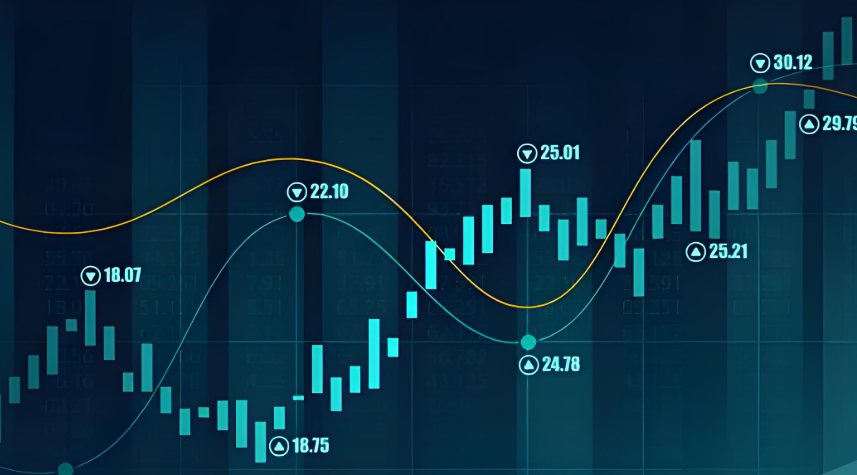The current exchange rate of the British pound against the US dollar remains notably stable, closing the previous trading day with a slight increase of 0.15 percent. This is particularly interesting considering that on the same day, the US dollar appreciated by 0.2 percent, showcasing robust momentum. Yet, in this context, the pound did not yield; rather, it exhibited inherent market resilience, setting a unique tone in the foreign exchange market.
A deeper exploration into the current state of the UK economy reveals a significant point of concern: the grocery inflation rate soared to 2.6 percent in November. This increase is far from trivial. It acts like a stone cast into a still lake, generating ripples throughout the market and sharply intensifying the focus on rising living costs. Grocery prices, as essential commodities in daily life, directly affect household budgets. As people find themselves spending more on fundamental food items, the pressure of living costs becomes increasingly palpable. This anxiety spreads across the market, not just impacting consumer confidence, but posing a potential threat to overall economic stability.
In parallel, the bond market is witnessing an expansion in yield spreads. Specifically, the yield on 10-year UK government bonds rose by 5 basis points, reaching a solid 4.325 percent, while the yield on 10-year US Treasuries followed suit, climbing 3 basis points to 4.226 percent. On the surface, these figures may seem straightforward, but they carry significant implications, reflecting distinct market forecasts and risk assessments for the economic prospects of both nations. The relatively high yield on UK bonds may suggest market concerns regarding the risks and uncertainties surrounding the British economy, whereas movements in US Treasury yields indicate that expectations for the US economy are also evolving.
The persistence of rising food prices not only affects everyday lives but could also have profound implications for the UK's political landscape. The current Labour government is facing substantial pressure, as public concerns about living costs escalate and expectations from the government heighten. If the Labour government fails to effectively address issues such as soaring food prices, it may end up experiencing a decline in public support. In a society where politics and economics are intricately linked, economic issues often reflect directly on the political arena, becoming a pivotal factor affecting the stability of governance.

In today's market environment, the movement of the dollar predominantly governs the fluctuations of the pound due to a lack of significant economic data from the UK or events related to the Bank of England. As the world’s primary reserve currency, the dollar's movements have a ripple effect across global foreign exchange markets. When the dollar strengthens, other currencies typically come under pressure; conversely, when the dollar weakens, it can open up opportunities for other currencies to appreciate. In this light, the pound's exchange rate against the dollar has become increasingly reliant on the dollar's performance.
Technical analysis reveals that the daily momentum indicators for the pound against the dollar are relatively neutral. This neutrality signifies a balance of power between buyers and sellers at the current daily level, indicating no substantial advantage for either side. Additionally, the contraction seen in the 21-day Bollinger Bands showcases a tightening market range. Traders are adopting a more cautious approach, leading to reduced price volatility. However, a noticeable conflict exists among the 5-day, 10-day, and 21-day moving averages, further intensifying market uncertainty. The varying moving averages indicate average costs and trends over different periods, complicating short-term and medium-term assessments for investors.
Switching to a weekly analysis presents a different picture. From a weekly perspective, the pound against the dollar still shows a bearish trend, illustrating a more pessimistic outlook on the pound's trajectory across a longer time period. The bearish forces appear to hold some sway at this level, casting a shadow over the future direction of the pound-dollar exchange rate.
In terms of support and resistance levels, the market is showing clear indicators. The recent low of 1.2619 and the trend low of 1.2475 in November constitute an initial support zone. Should the pound-dollar exchange rate decline into this area, it is likely to encounter some support, which may slow the drop or even trigger a rebound. Conversely, the resistance levels are marked by last Friday’s high of 1.2810 and the 38.2% retracement level from the downtrend between September and November at 1.2839. If the pound-dollar rate can successfully close above 1.2839, it could signal the end of the downward trend experienced from September to November, potentially ushering in fresh upward momentum. A breakthrough at this pivotal level would alter market sentiment, enticing more investors to enter long positions and propelling the pound-dollar rate further upward.
In conclusion, the exchange rate of the pound against the dollar is currently influenced by a plethora of intertwining factors—economic data, political dynamics, and technical indicators—all collectively shaping its trajectory. Investors must keep a vigilant eye on these factors to make informed decisions amidst the complexities of the market environment.